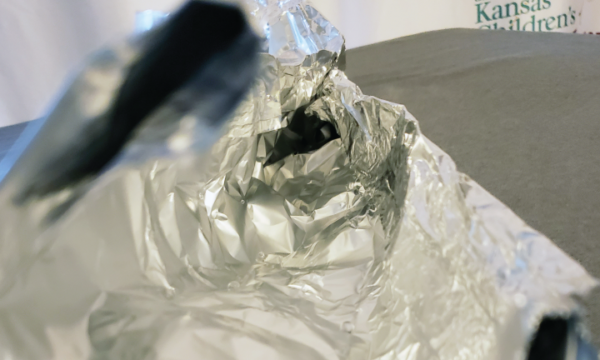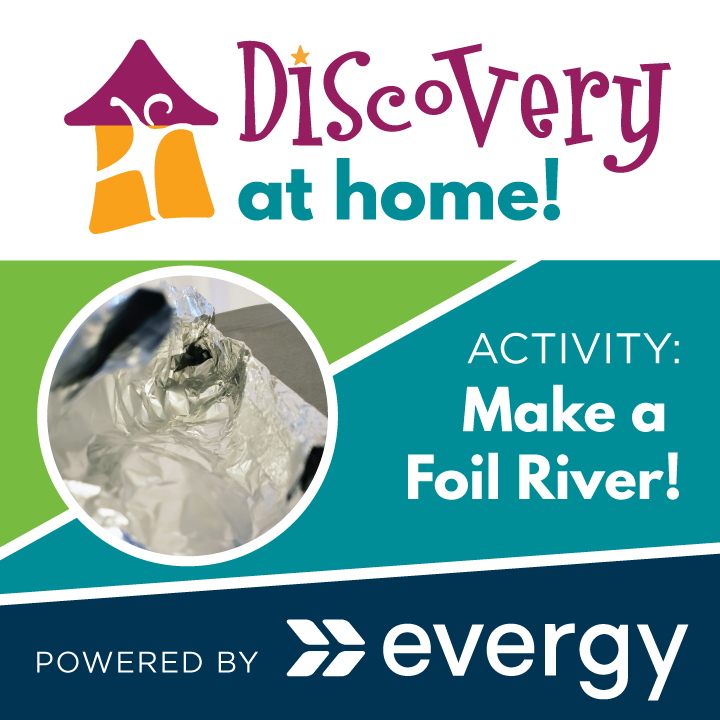What you need:
- Foil.
- Water.
- Toys or objects that float.
- Buckets or cups.
- Short chair or table.

Directions:
- Place a bucket filled with water on the ground.
- Using a long piece of foil, create a “U” shape creating a path for the water to travel inside the foil.
- Set one end of the foil on the short table or chair and the other end on the bucket.
- Use buckets or cups to transfer water to the beginning of the foil river.
- Pour the water onto the foil river and watch it flow downstream!
- Include toys or other materials that float in the water as it travels or have another person send water down the while the other plays with the moving water.
Ways to expand this activity:
- Create more than one foil structure. Line them up in a path and see if you can make water through them all without having to adjust anything.
- Create a taller starting point. What happens when water travels faster? Do you have to adjust the structure?
What kids learn:
- Basic engineering skills. They learn to solve problems by using the engineering design process: asking questions, coming up with solutions, building, testing and improving.
- Engineering is utilized in a variety of fields. Engineers are needed to help create better shoes, learn materials and how they can be used in unique ways, etc.
- Fine motor skills. Kids practice using the small muscles in their hands later used for writing.
- Experimentation! When kids experiment, they're learning how to learn. Failure is an important part of experimenting, so let kids try things that won’t work. It’s how they figure things out!
Vocabulary:
- System. Parts of a structure. In this case, the system is referring to all parts of the structure that you designed.
- Constraint. A limitation or restriction. Materials, time, and space are common constraints. Real engineers have to work around constraints all the time!

